The Toyota 4Runner, a mid-size SUV renowned for its off-road prowess, has historically offered manual transmissions, appealing to enthusiasts who value driving control and mechanical connection․
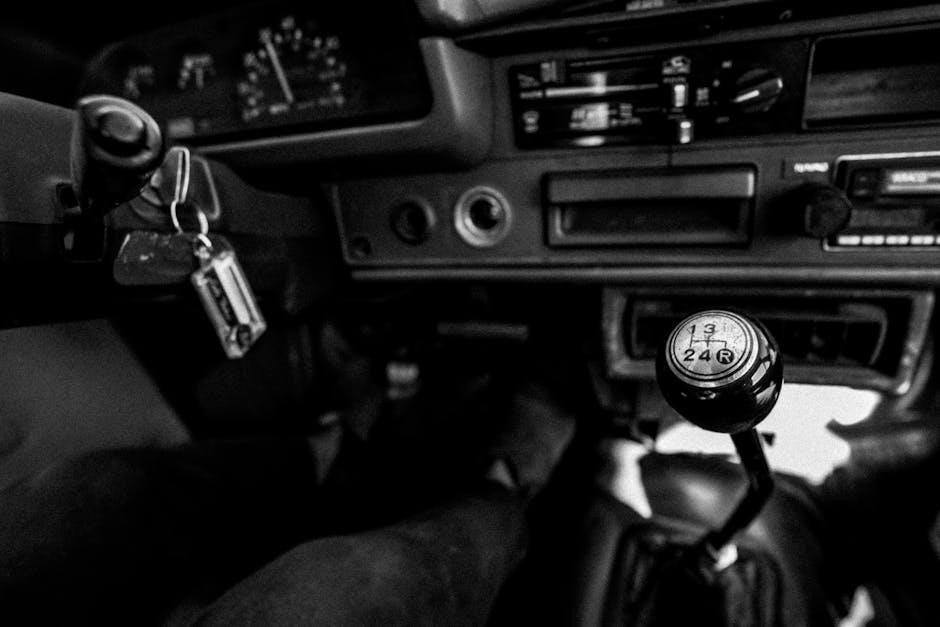
Brief History of the Toyota 4Runner
The Toyota 4Runner, introduced in 1984, is a mid-size SUV that quickly gained popularity for its ruggedness and off-road capabilities․ Initially based on the Toyota pickup platform, it evolved into a distinct utility vehicle․ The first generation (1984-1989) featured a 5-speed manual transmission, appealing to enthusiasts who valued control and connection to the vehicle․ Over the years, the 4Runner became synonymous with reliability and durability, making it a favorite among adventurers․ As the model progressed through generations, Toyota gradually shifted toward automatic transmissions, with manual options becoming less prominent․ By the fifth generation (2010-present), manual transmissions were no longer offered, reflecting broader industry trends․ Despite this, the 4Runner’s legacy as a capable and enduring off-road vehicle remains unchanged, with its earlier manual models still cherished by many․
Popularity of Manual Transmissions Among Enthusiasts
Manual transmissions have long been a cherished feature among driving enthusiasts, offering a more tactile and engaging experience behind the wheel․ For Toyota 4Runner owners, the manual transmission was particularly sought after for its ability to enhance control during off-road adventures․ The 5-speed manual, available in earlier generations, allowed drivers to navigate challenging terrains with precision, making it a staple for those who valued mechanical connection and driving involvement․ Despite the growing prevalence of automatics, a dedicated community of enthusiasts continues to advocate for manual transmissions, often modifying their vehicles to retain this feature․ The emotional and functional connection provided by manual transmissions has cemented their place in the hearts of many 4Runner fans, even as Toyota phased them out in newer models․

Evolution of Manual Transmission in the Toyota 4Runner
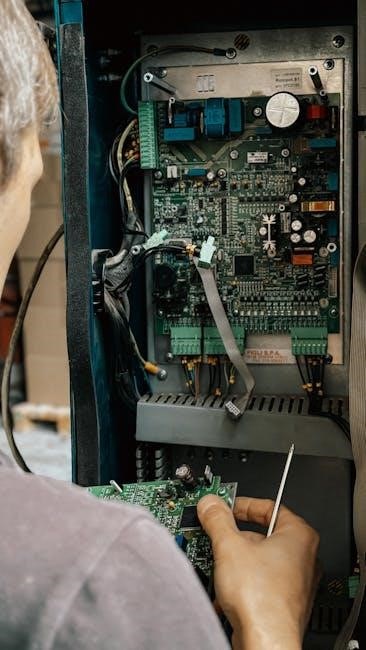
The Toyota 4Runner introduced its manual transmission in 1984 as a standard 5-speed option, offering drivers precise control․ By 2003, it became optional, and later generations phased it out entirely․
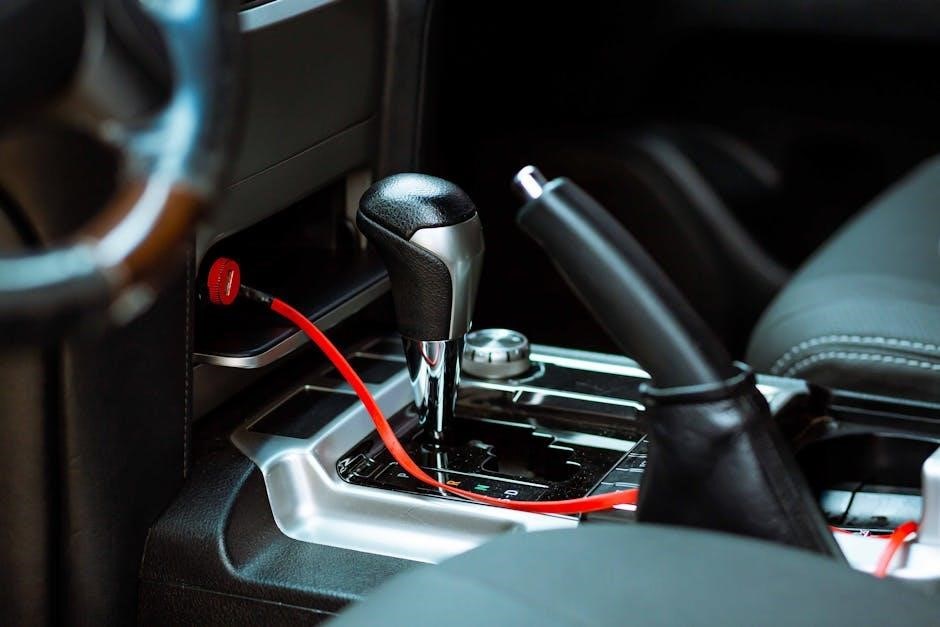
First Generation (1984-1989)
The first-generation Toyota 4Runner, introduced in 1984, featured a standard 5-speed manual transmission, offering drivers precise control and a direct mechanical connection to the vehicle․ This setup was integral to its off-road capabilities and lightweight design, making it a favorite among adventurers․ The manual transmission emphasized simplicity and reliability, aligning with Toyota’s reputation for durability․ During this era, the 4Runner was essentially a utilitarian vehicle, prioritizing function over luxury, which further highlighted the manual transmission’s practical appeal․ Its ruggedness and ease of maintenance solidified its reputation as a dependable off-road companion, laying the foundation for future generations․ The first-generation 4Runner remains iconic for its no-frills approach and the engaging driving experience provided by its manual transmission․
Second Generation (1990-1995)
The second-generation Toyota 4Runner, spanning from 1990 to 1995, saw the continuation of the 5-speed manual transmission, now refined for smoother shifting and improved off-road performance․ This generation marked a shift toward a more civilized interior while retaining its rugged capabilities․ The manual transmission remained a popular choice, offering drivers enhanced control during both on-road and off-road adventures․ Toyota also introduced minor updates to the transmission’s synchronizers and gear ratios, enhancing drivability and efficiency․ Although automatic options became more available, the manual transmission’s presence underscored the 4Runner’s identity as a versatile and driver-focused SUV․ This era balanced practicality with performance, ensuring the manual transmission remained a key feature for enthusiasts seeking an engaging driving experience․
Third Generation (1996-2002)
The third-generation Toyota 4Runner (1996-2002) marked a significant shift in the availability of manual transmissions․ While the 5-speed manual remained an option for the 2․7L inline-four engine, it was discontinued for the 3․4L V6 engine, which was only paired with an automatic transmission․ This decision reflected Toyota’s growing focus on catering to a broader audience seeking convenience and comfort․ However, the manual transmission continued to be popular among off-road enthusiasts, who appreciated its precision and control in rugged terrain․ Despite its limited availability, the manual transmission in the 2․7L models remained a favorite for purists․ This generation saw the beginning of the decline of manual transmissions in the 4Runner lineup, foreshadowing future changes in Toyota’s transmission offerings․
Fourth Generation (2003-2009)
The fourth-generation Toyota 4Runner (2003-2009) saw the manual transmission option further phased out, as Toyota continued to prioritize automatic transmissions for improved convenience and smoother city driving․ The 5-speed manual was only available on the base model with the 4․0L V6 engine, and even then, it was not a popular choice among buyers․ This generation also introduced more advanced features and refined interiors, appealing to a more urban and family-oriented market․ The manual transmission, once a staple for off-road enthusiasts, became increasingly niche․ By the end of this generation, the manual transmission was discontinued, signaling a shift towards automatic-only configurations in future models․ This decision aligned with broader industry trends favoring automatics, but it disappointed long-time fans of the 4Runner’s manual heritage․
Fifth Generation (2010-Present)
The fifth-generation Toyota 4Runner, introduced in 2010, marked the end of the manual transmission era for the model․ Toyota discontinued the manual option entirely, citing low demand and a market shift toward automatic transmissions․ Despite its popularity among off-road enthusiasts, the manual transmission was no longer a viable option for the majority of buyers․ The fifth generation focused on refining the automatic transmission, offering a 5-speed and later a 6-speed unit, to enhance both on-road comfort and off-road capability․ While some enthusiasts expressed disappointment, Toyota emphasized the improved efficiency and convenience of automatics․ The absence of a manual transmission has remained a point of contention, with fans occasionally advocating for its return, though Toyota has not indicated plans to reintroduce it in this generation․

Discontinuation of Manual Transmission in Newer Models
Toyota phased out manual transmissions in newer 4Runner models due to declining demand, shifting consumer preferences toward automatics, and the rising popularity of convenience-focused driving technologies․
Why Toyota Stopped Offering Manual Transmissions
Toyota discontinued manual transmissions in the 4Runner due to low demand and shifting consumer preferences․ Modern drivers increasingly favor automatics for convenience and ease, especially in urban settings․ Additionally, the rise of advanced automatic transmissions, which offer improved fuel efficiency and smoother performance, has reduced the appeal of manual options․ Toyota’s decision aligns with industry trends, as fewer buyers opt for manual transmissions․ The company has also focused on meeting market demands for more technologically advanced and user-friendly vehicles․ This shift reflects broader automotive industry movements toward automation and reduced complexity for drivers․
Impact on the 2023 and 2025 Models
The absence of manual transmissions in the 2023 and 2025 Toyota 4Runner models marks a significant shift in the vehicle’s offerings․ Enthusiasts who prefer manual driving are disappointed, as this option is no longer available․ The 2023 model was the last to potentially consider manual transmission, but it was ultimately excluded․ For 2025, Toyota has confirmed that the 4Runner will not feature a manual option, aligning with industry trends that favor automatics․ This decision impacts the vehicle’s appeal to off-road enthusiasts and driving purists who value the control and engagement of manual transmissions; Toyota’s focus on automatics reflects broader consumer preferences, despite a vocal minority advocating for the return of manual options in future models․
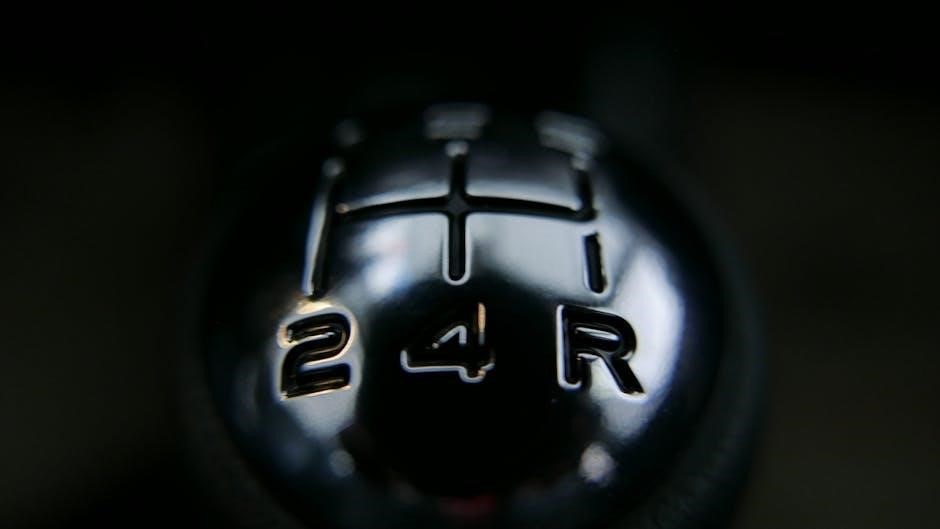
Available Replacement Options for Manual Transmissions
Replacement manual transmissions for the Toyota 4Runner are available through sources like eBay, offering complete units with guaranteed fit and reliability for various model years․
Where to Find Replacement Parts
Replacement parts for the Toyota 4Runner manual transmission can be sourced from various retailers, including eBay, which offers complete manual transmission units with guaranteed fit․ Specialized auto parts stores and Toyota dealerships also provide genuine or aftermarket components․ Additionally, enthusiast forums and communities often share information on trusted suppliers and DIY solutions․ Salvage yards may carry used transmissions or related parts at lower costs; Online marketplaces like eBay ensure a wide selection, while authorized Toyota service centers guarantee authenticity and compatibility․ For those seeking expert assistance, professional mechanics or transmission specialists can also help locate and install the right parts․ This ensures optimal performance and reliability for the 4Runner’s manual transmission system․
Installation Tips and Considerations
Installing a manual transmission in the Toyota 4Runner requires careful planning and expertise․ It is highly recommended to consult a certified mechanic or transmission specialist to ensure proper installation․ Specialized tools and a well-equipped workshop are essential for handling the complexity of the process․ Before starting, verify that the replacement transmission is compatible with the vehicle’s make, model, and year to avoid mismatches․ Follow the manufacturer’s instructions for torque specifications and fluid requirements․ Additionally, consider upgrading the clutch and flywheel for optimal performance․ DIY enthusiasts should exercise caution, as improper installation can lead to mechanical failure or safety hazards․ Always use genuine or high-quality aftermarket parts to maintain reliability․ Proper alignment of the transmission with the engine and drivetrain is critical for smooth operation․ Finally, test the vehicle thoroughly after installation to ensure all components function as intended․

Community Demand and Toyota’s Response
Enthusiasts have consistently voiced their desire for a manual transmission in the Toyota 4Runner, emphasizing the driving experience it offers․ Toyota has acknowledged the possibility, though no official commitment has been made․
Enthusiast Campaigns for Manual Transmission
Enthusiasts have long championed the return of a manual transmission in the Toyota 4Runner, citing its superior driving engagement and off-road control․ Many within the 4Runner community have expressed frustration over the discontinuation of manual options in newer models, particularly the 2023 and 2025 generations․ Online forums and social media platforms are filled with discussions and petitions urging Toyota to reconsider․ Some owners have even taken to modifying their vehicles with aftermarket manual transmissions, showcasing the demand and dedication of the fanbase․ Despite these efforts, Toyota has yet to announce any plans to reintroduce a manual transmission for the 4Runner, though they have acknowledged the technical feasibility of such a move․
Toyota’s Official Statements
Toyota has addressed the absence of a manual transmission in the newer 4Runner models, stating that the decision is primarily driven by low consumer demand․ A spokesperson confirmed that while a manual-equipped 4Runner is technically feasible, there has been little to no strong customer request for it․ This aligns with industry trends, where automatic transmissions dominate the market․ Toyota emphasized that their focus remains on meeting the preferences of the majority of their customers․ However, they have not entirely ruled out the possibility of reintroducing a manual transmission in the future, should demand increase․ For now, enthusiasts looking for a manual option within the Toyota lineup are directed to the Tacoma, which still offers this feature․
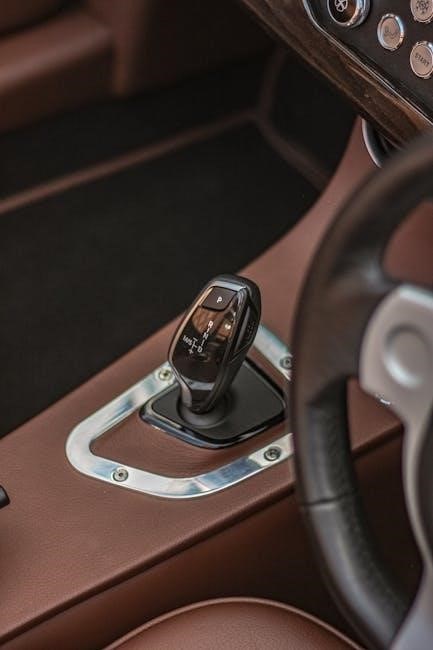
Performance and Maintenance
The manual transmission in the Toyota 4Runner enhances driving precision and control, especially off-road, while offering improved fuel efficiency and a more engaging driving experience․ Regular maintenance, such as clutch and gearbox checks, ensures longevity and optimal performance․
Performance Benefits of Manual Transmission
The manual transmission in the Toyota 4Runner provides enhanced control and driving engagement, particularly in off-road scenarios․ Drivers can experience better acceleration and responsiveness due to the direct connection between the engine and wheels․ Additionally, manual transmissions are generally lighter and more fuel-efficient compared to automatics, which can improve overall vehicle performance․ The ability to manually shift gears allows for precise torque management, crucial for navigating challenging terrains․ Furthermore, the mechanical simplicity of manual transmissions often results in lower maintenance costs over time․ Enthusiasts appreciate the tactile feedback and the sense of mastery that comes with driving a stick shift, making the Toyota 4Runner a favorite among those who value both utility and driving enjoyment․
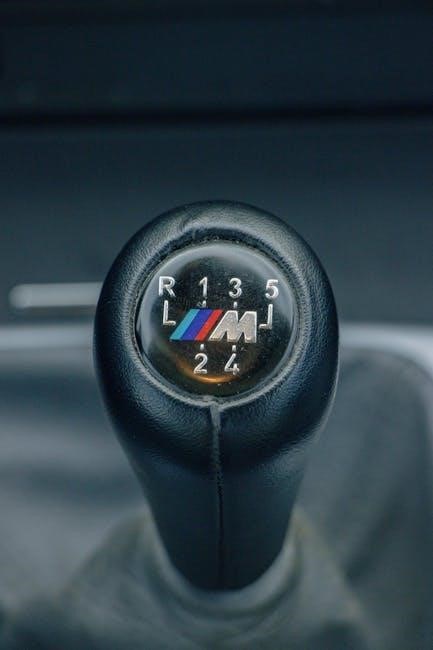
Maintenance Tips for Manual Transmissions
Regular maintenance is crucial to ensure the longevity and smooth operation of the Toyota 4Runner’s manual transmission․ One key step is to replace the transmission fluid every 30,000 to 60,000 miles, as dirty fluid can lead to premature wear․ Inspecting the clutch system for wear and tear is also essential, as excessive wear can result in costly repairs․ Additionally, drivers should monitor the transmission mounts and replace them if they show signs of deterioration․ Lubricating the shift linkage and ensuring proper alignment of the drivetrain can prevent unnecessary strain on the transmission․ For older models, upgrading to a high-performance clutch or lightweight flywheel can enhance responsiveness․ Finally, addressing any unusual noises or vibrations promptly can prevent minor issues from becoming major problems․ Proper care ensures the manual transmission remains reliable and continues to deliver the performance enthusiasts expect․
The Toyota 4Runner’s manual transmission has left an indelible mark on its legacy, offering drivers a unique connection to the vehicle․ However, with the discontinuation of manual options in newer models, enthusiasts are left hoping for a resurgence․ While Toyota has acknowledged the technical feasibility of reintroducing a manual transmission, current demand and market trends suggest it may not happen soon․ The community remains vocal, with petitions and campaigns urging Toyota to reconsider․ Despite this, the 2025 model and beyond are expected to maintain the automatic-only configuration․ As the automotive landscape evolves, the future of the 4Runner’s manual transmission remains uncertain, leaving fans to cherish older models while awaiting any potential reversal by Toyota․